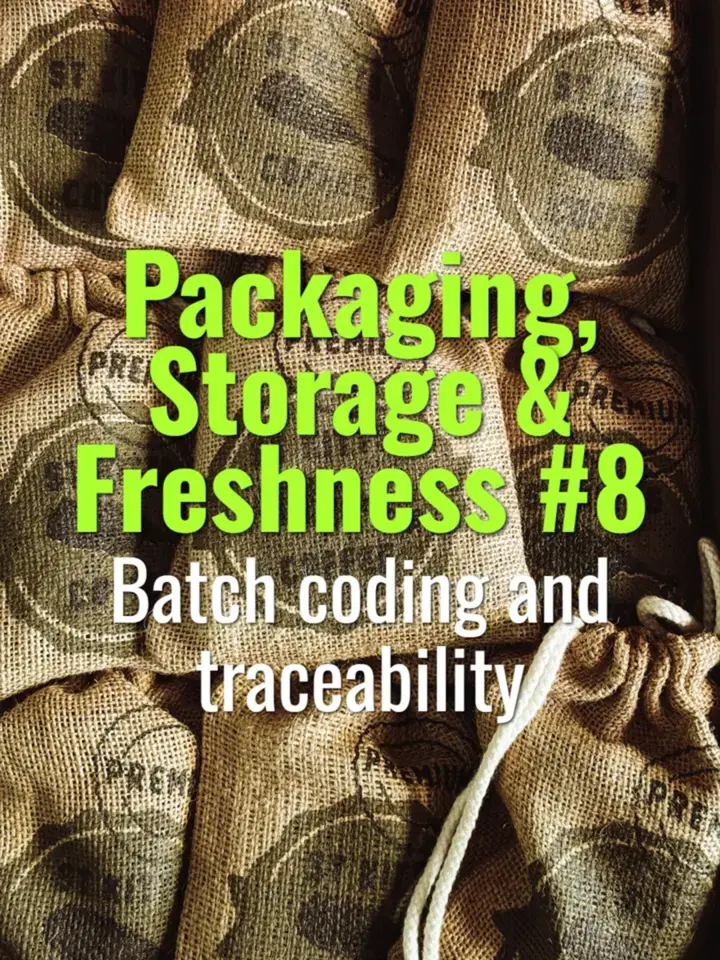Batch coding and traceability
How batch coding and traceability systems support quality control, compliance, and consumer trust in coffee packaging.
- Coffee Basics Nerds
- 1 min read
Article 8 of 12 in Packaging, Storage & Freshness/

What is Batch Coding?
- A unique identifier printed on packaging (letters, numbers, or QR codes).
- Links a retail bag to a specific roast batch, production date, or lot.
- Can include roast date, best-before date, or internal codes.
Why It Matters
- Enables quality control by tracing defects back to production.
- Supports food safety compliance with recall systems if contamination occurs.
- Builds consumer confidence when transparency is shared (e.g., roast date clearly visible).
Traceability Systems
- Extend beyond roastery to cover:
- Farm or cooperative of origin.
- Processing method and lot separation.
- Export/import documentation.
- Storage and shipment records.
- Increasingly linked to digital platforms with QR codes for consumers.
Practical Applications
- Internal: Track roasting curves, packaging dates, and storage conditions.
- External: Provide customers with farm info, certifications, and harvest year.
- Audits: Support compliance with international standards (ISO, HACCP, organic, Fairtrade).
Benefits
- Faster issue resolution (e.g., defective valve batch traced to date/lot).
- Transparency strengthens brand reputation.
- Enables storytelling for specialty coffee (farm-to-cup journey).
Summary
Batch coding and traceability connect each bag of coffee to its roast, origin, and processing history. They are essential for quality control, compliance, and consumer trust, while also enhancing transparency and storytelling in specialty coffee.